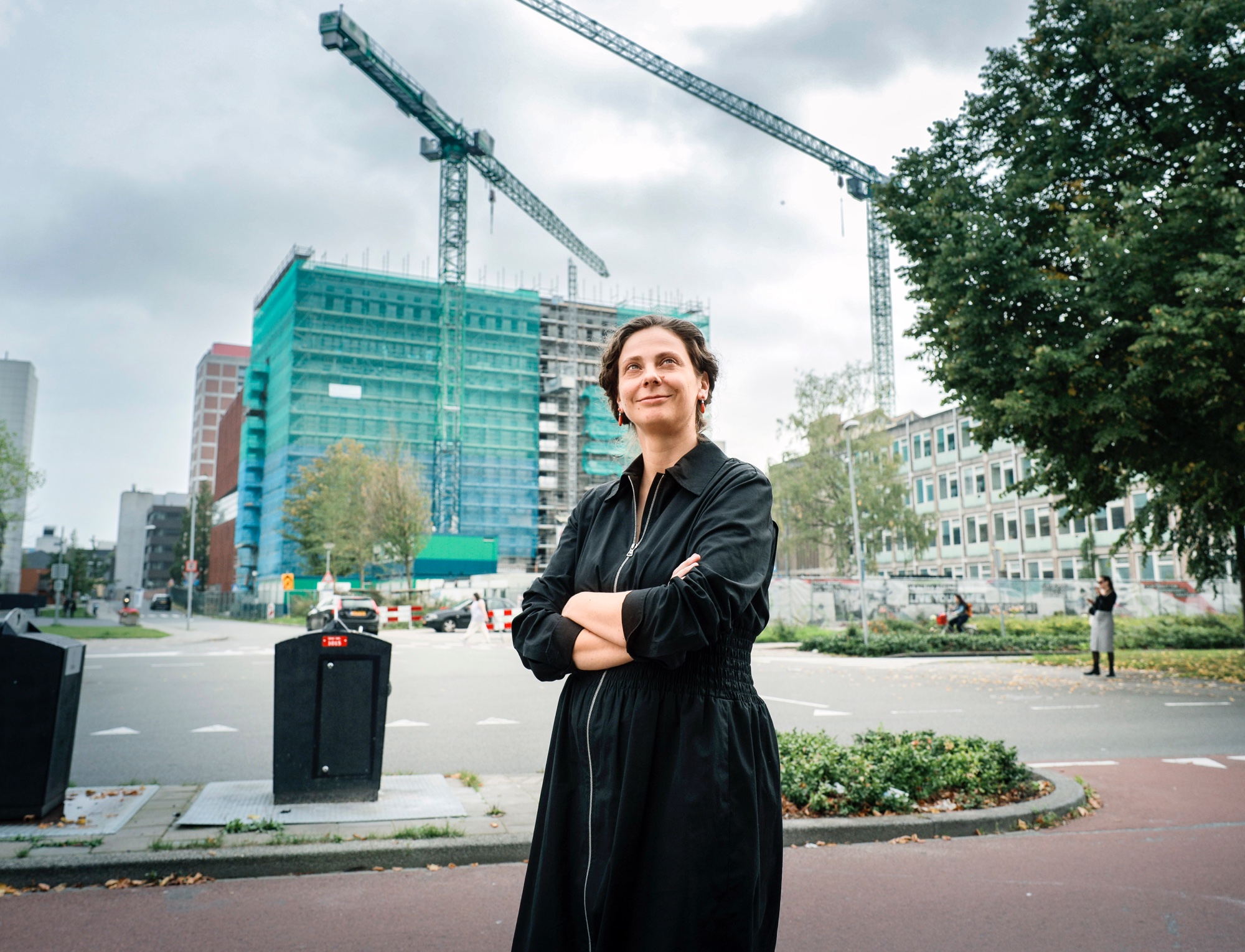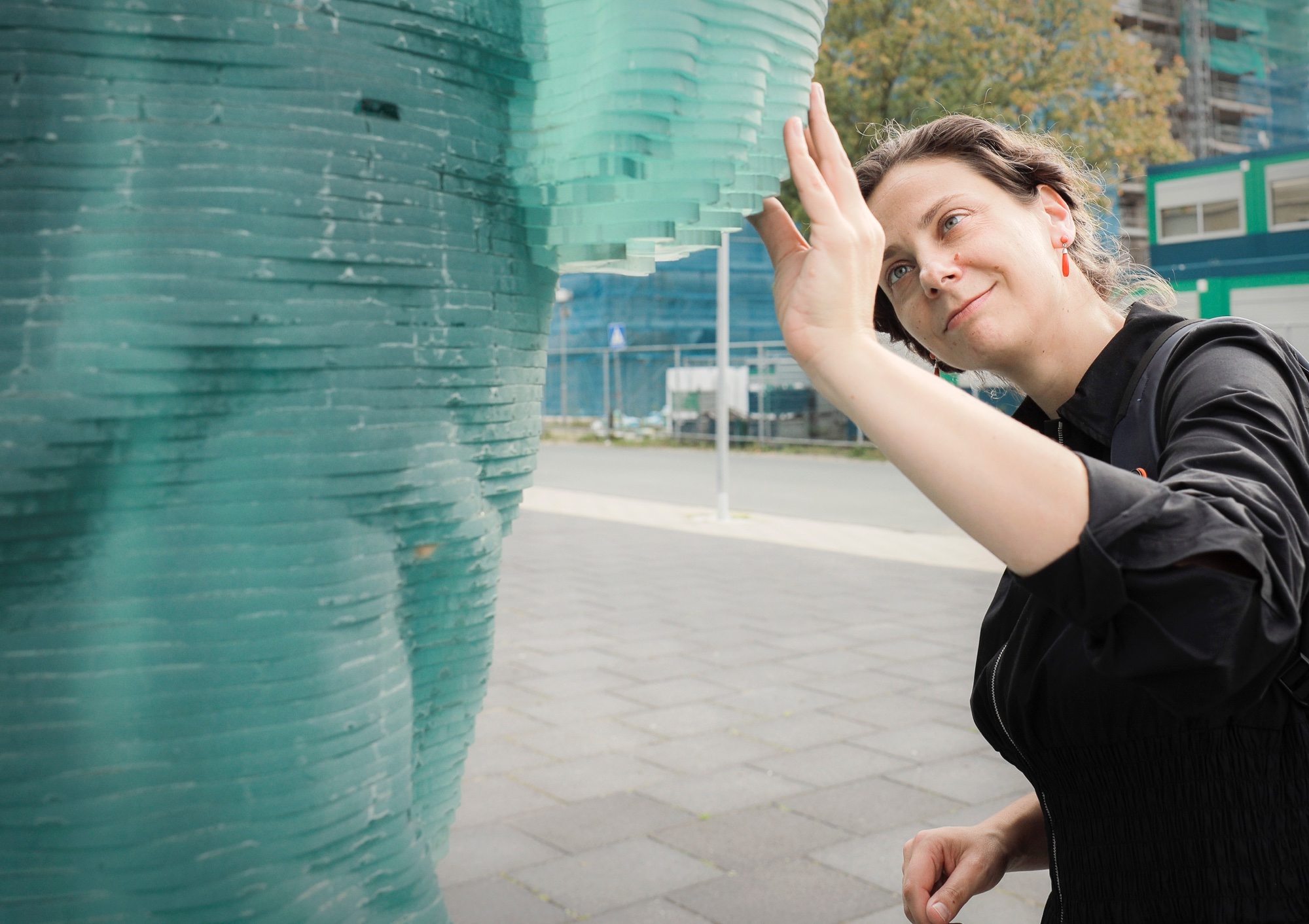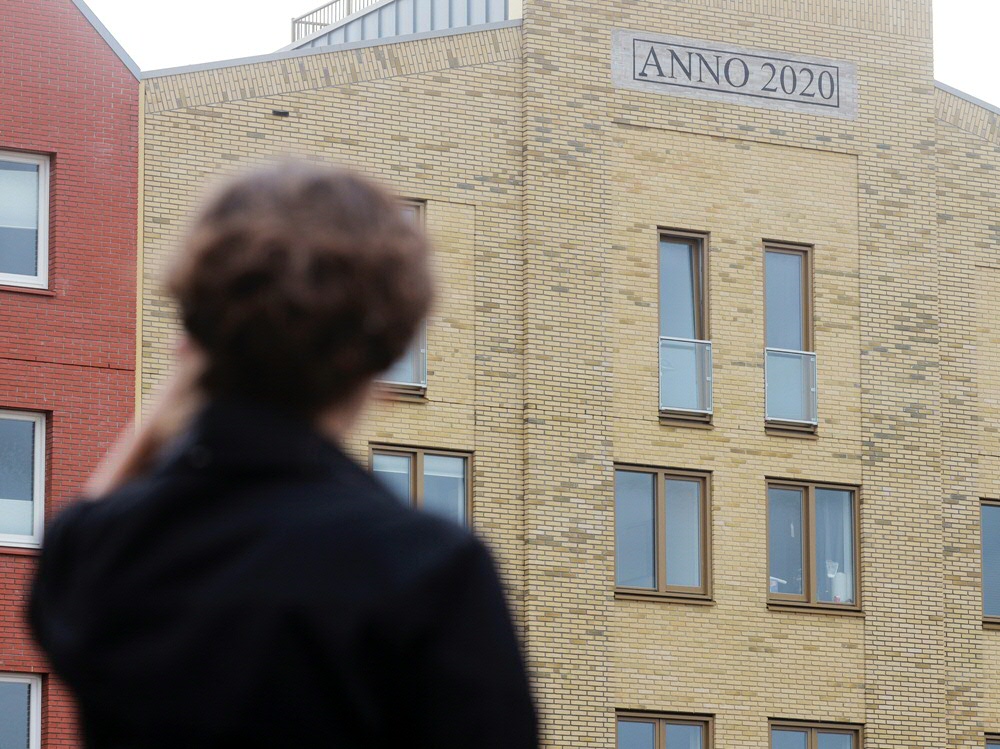Building sites, glassblowers and handmade vases: A close look at Roman creation processes
The Roman Empire saw a previously unparalleled production of numbers of buildings and artefacts. How did the Romans deal with these changes? What ideas did they have about creation processes, and how did these ideas affect their view of the world? Dr Bettina Reitz-Joosse , Associate Professor of Latin Language and Literature at the University of Groningen, has been thinking about these questions for quite some time. This autumn, she will initiate a large-scale study together with a number of PhD students, a postdoc, and several student-assistants.
Text: Lieke van den Krommenacker| Photos: Henk Veenstra

Bettina Reitz-Joosse could have never imagined that a simple walk along the Bodleian Library during her studies in Oxford would plant the seed for a large-scale study on the meaning of creation processes for the citizens of ancient Rome. Reitz-Joosse: ‘I had walked past that library a thousand times before – it is a beautiful building. This time, however, it was undergoing renovations; the façade was being worked on. This changed how I looked at it.’
Reitz-Joosse became fascinated by the question of how Romans would have thought, felt, and spoken about the creation of buildings and objects – from something as big as a library or an obelisk to smaller objects, such as a woven rug or a mouth-blown vessel.
The impact of a building site
The appearance of the library in Oxford changed a little bit every day. There was a lot of noise, and the area around it was a big mess, so pedestrians were constantly faced with detours. ‘That set me thinking even more’, Reitz-Joosse explains. ‘How would people have experienced this in ancient Rome, where there was a lot of building and creating going on? How did all those building sites affect people? How did they feel about the way in which building and creation processes interfered with nature? And which ethical or moral implications did these processes have?’
A completed degree, a PhD in Leiden and several research projects later, Reitz-Joosse edited her questions and ideas into a research proposal, for which she was awarded a European grant last year. This grant will enable her to spend the coming years collecting, organizing, and analysing ancient Greek and Latin texts as well as Roman images, together with a team consisting of two other textual scholars, an archaeologist and several student-assistants. The researchers will specifically focus on the first and second centuries CE, because relatively homogeneous and efficient creation processes enabled the creation of new kinds of buildings and artefacts in this era at a staggering scale and speed.

Bangladesh, togas and enslaved people
‘What I would like to know’, Reitz-Joosse says, ‘is what Roman thought when they were holding a certain object in their hands. A glass vessel, for example. They might think: how beautiful, or how useful. But perhaps they also had ideas about how the vessel had been created, and perhaps these ideas affected the way they looked at it. That’s what I’m curious about.’
These ideas were probably very different from our current ideas about how and why things are made. Reitz-Joosse: ‘What if I told you that your T-shirt was made in a sweatshop in Bangladesh, by children? You might not feel comfortable wearing it any longer. And what if you give me a vase and tell me that it is handmade? I will probably think: wow, that is special!’
The Romans had different ideas. A rich Roman would not at all be surprised to hear that his toga was produced by an enslaved person. Who else would have made it? And of course a vase would be hand-painted; there was no other way. ‘But in which other ways would it matter to a Roman how something was produced? That is what I want to find out’, says Reitz-Joosse.
She will, of course, be facing the same problem that everyone who studies Roman antiquity encounters: there are no Romans left to answer these questions. ‘But we can find a lot of information by looking at texts and images that describe and show creation processes.’
Divine glassblower
Take, for example, a Greek text passage about glassblowers that Reitz-Joosse encountered. ‘It is a wonderful text on a small piece of papyrus. The glassblower is described as an almost divine figure who, together with the fire god Hephaistos, performs the miracle of breathing life into the glass and moulding it – almost like a cosmic creator.’
In addition to analysing what exactly is being said and depicted, it is also important to look for what is being left out. This, too, can say a lot about the social and societal reality of the Romans. For example, the author of the passage about the glassblower completely ignored the fact that it was impossible to blow glass on your own.
‘You needed a second person to keep the fire at exactly the right temperature and to hand you the tools’, Reitz-Joosse explains. ‘But the author of this text was obviously not interested in this detail. We will have to do more research to find out why this was the case.’

More complete image
By studying a large amount of texts and images – for example prose and poetry, paintings, mosaics, and reliefs – about glassblowers, weavers, sculptors, carpenters, bricklayers, and construction workers, the researchers will acquire a much more complete image of how Romans viewed and valued the physical world surrounding them.
When you study so many different construction processes, where do you start looking and how do you decide when you’re done?
Reitz-Joosse: ‘We will be working in two phases: first, we will collect and systematize a lot of material. This means that we will gather everything we can find in terms of written or physical sources that have been preserved about a certain topic, such as weaving. We have defined a few criteria for systematizing the material. For example, is it about men or women, and is the emphasis on divine or human representation? This will ultimately result in a large data collection.’
And then it is time to start making choices. ‘The PhD students in my team are each working on their own thesis, for which they determine their own angles. My job is to keep an eye on the big picture.’
Extra dimension
In the coming years, she and her colleagues are hoping to add a crucial dimension to the existing cultural history of creating and building in Roman Antiquity. ‘A lot of research is already being done into the technical, logistical, and economic sides of creating and building, for example by archaeologists’, says Reitz-Joosse. ‘We aim to bring making and meaning together and to link the process of creation to its meaning. This way, we hope to gain a better understanding of the ancient Romans.’
Reitz-Joosse realizes that ‘the’ Romans in this case are mainly elite male Romans, since they created the majority of texts to be studied. ‘But it is still better only to know what went on in the minds of relatively elite Romans than not to know anything at all, particularly because these powerful, rich Romans had considerable influence on the reality of the rest of society. But this is precisely why it is also so important to pay close attention to what is left out in our text and images.’
Want to know more?
Also, watch this video from the University of the Netherlands, in which Bettina Reitz-Joosse explains why Roman emperors were so proud of erecting obelisks.
More news
-
16 December 2025
How AI can help people with language impairments find their speech
-
18 November 2025
What about the wife beater? How language reinforces harmful ideas
-
03 November 2025
Menopause in perspective: How the media influences our perception
